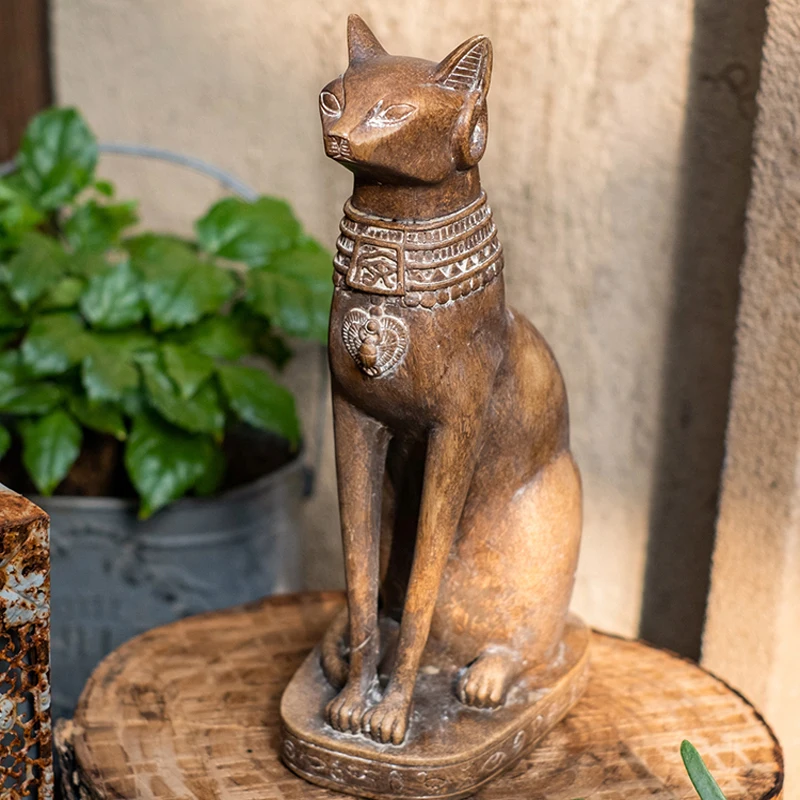Sacred Geometry Sacred geometry is a profound and ancient study that explores the mathematical principles and geometric patterns found in the natural world, art, architecture, and spiritual traditions. Spirituality is a concept that has been explored and practiced by humans for centuries. It encompasses a wide range of beliefs and practices that aim to connect individuals with something greater than themselves. While spirituality is often associated with religion, it can also be approached from a scientific perspective. The intersection of spirituality and science is an area of study that has gained increasing attention in recent years.
Exploring the connection between spirituality and science is important for several reasons. Firstly, it allows us to bridge the gap between the subjective experiences of spirituality and the objective methods of scientific inquiry. By examining spirituality through a scientific lens, we can gain a deeper understanding of its underlying mechanisms and effects on individuals. Additionally, exploring the science of spirituality can help to demystify spiritual practices and make them more accessible to a wider audience.
Contents
- 1 The Concept of Sacred Geometry
- 2 The Universe as a Sacred Geometric Structure
- 3 The Role of Geometry in Spiritual Practices
- 4 The Connection between Spirituality and Mathematics
- 5 The Golden Ratio and its Significance in Spirituality
- 6 The Fibonacci Sequence and its Spiritual Implications
- 7 The Symbolism of Geometric Shapes in Spirituality
- 8 The Use of Sacred Geometry in Ancient Spiritual Traditions
- 9 The Relationship between Sacred Geometry and Meditation
- 10 Metatron’s Cube Meaning
- 11 Spirit Science Sacred Geometry
- 12 Sacred Geometry and Meaning
- 13 FAQs
Key Takeaways
- Sacred geometry is the study of geometric patterns and shapes that are believed to have spiritual significance.
- The universe is seen as a sacred geometric structure, with patterns and shapes repeating at all levels of existence.
- Geometry plays a significant role in spiritual practices, including meditation and visualization.
- The golden ratio and Fibonacci sequence are two examples of sacred geometric patterns that have spiritual implications.
- Ancient spiritual traditions, such as those of the Egyptians and Greeks, used sacred geometry in their art, architecture, and religious practices.
The Concept of Sacred Geometry
Sacred geometry is a term used to describe the study of geometric shapes and patterns that are believed to hold spiritual significance. It is based on the idea that certain geometric forms have inherent qualities that can be used to enhance spiritual experiences and understanding. The study of sacred geometry dates back to ancient civilizations such as the Egyptians, Greeks, and Mayans, who incorporated geometric principles into their art, architecture, and spiritual practices.
Sacred geometric shapes and patterns can be found in various cultures around the world. Some examples include the Flower of Life, which consists of overlapping circles forming a symmetrical pattern; the Sri Yantra, a complex geometric diagram used in Hinduism; and the Vesica Piscis, an oval shape formed by two intersecting circles. These shapes are believed to represent fundamental aspects of existence and can be used as tools for meditation, prayer, and spiritual exploration.
The Universe as a Sacred Geometric Structure
According to sacred geometry, the universe itself is structured based on geometric principles. It is believed that geometry played a fundamental role in the creation and evolution of the universe. The study of cosmology, which explores the origins and structure of the universe, has found correlations between sacred geometric patterns and the distribution of matter and energy in the cosmos.
Sacred geometry provides a framework for understanding the interconnectedness of all things in the universe. It suggests that there is an underlying order and harmony that can be observed through geometric patterns. By studying these patterns, we can gain insights into the nature of reality and our place within it. This connection between sacred geometry and cosmology offers a unique perspective on the mysteries of the universe and our existence within it.
The Role of Geometry in Spiritual Practices
| Geometry | Spiritual Practice | Metric |
| Sacred Geometry | Meditation | Increased focus and concentration |
| Mandalas | Yoga | Enhanced mindfulness and relaxation |
| Geometric Patterns | Prayer | Heightened spiritual awareness |
| Geometric Shapes | Rituals | Symbolic representation of spiritual concepts |
Geometry plays a significant role in various spiritual practices, such as meditation and prayer. Sacred geometric shapes and patterns are often used as visual aids to focus the mind and enhance spiritual experiences. For example, mandalas, which are intricate geometric designs, are commonly used in meditation practices to promote relaxation, concentration, and self-reflection.
Incorporating sacred geometry into spiritual practices can have several benefits. Firstly, it provides a visual representation of abstract concepts, making them easier to comprehend and internalize. Additionally, sacred geometry can help individuals to connect with their inner selves and tap into higher states of consciousness. By focusing on geometric shapes and patterns, practitioners can enter a state of flow and transcend their everyday reality.
There are numerous examples of spiritual practices that utilize sacred geometry. For instance, in Tibetan Buddhism, practitioners create intricate sand mandalas as a form of meditation and spiritual offering. In Islamic art and architecture, geometric patterns are used to symbolize the infinite nature of God. These examples demonstrate how sacred geometry is deeply ingrained in various spiritual traditions around the world.

The Connection between Spirituality and Mathematics
The relationship between spirituality and mathematics dates back to ancient times. Many ancient civilizations believed that numbers held mystical qualities and could be used to unlock the secrets of the universe. For example, the Pythagoreans, a school of thought in ancient Greece, believed that numbers were the building blocks of reality and that mathematical principles governed all aspects of existence.
While spiritual and mathematical concepts may seem distinct, they share some similarities. Both spirituality and mathematics seek to uncover fundamental truths about the nature of reality. They both involve abstract thinking and the exploration of patterns and relationships. Additionally, both disciplines require a certain level of intuition and creativity to make connections and discover new insights.
Mathematics can also play a role in understanding spiritual concepts. For example, fractal geometry, a branch of mathematics that deals with complex patterns that repeat infinitely at different scales, has been used to explain the self-similarity found in nature and spiritual symbolism. By applying mathematical principles to spiritual concepts, we can gain a deeper understanding of their underlying structure and significance.
The Golden Ratio and its Significance in Spirituality
The golden ratio is a mathematical concept that has been revered for its aesthetic qualities and spiritual significance. It is a ratio that can be found in various natural phenomena, such as the proportions of the human body, the growth patterns of plants, and the structure of galaxies. The golden ratio is often associated with beauty, harmony, and balance.
In many cultures and traditions, the golden ratio is believed to hold spiritual meaning. For example, in ancient Greece, it was considered the perfect proportion and was used extensively in art and architecture. In Hinduism, the golden ratio is associated with divine creation and is believed to represent the union between the physical and spiritual realms.
The presence of the golden ratio in nature and art suggests a deeper connection between mathematics and spirituality. It implies that there is an inherent order and balance in the universe that can be observed through mathematical principles. By recognizing and appreciating the presence of the golden ratio in our surroundings, we can develop a greater sense of awe and reverence for the natural world.
The Fibonacci Sequence and its Spiritual Implications
The Fibonacci sequence is a series of numbers in which each number is the sum of the two preceding ones. It is a mathematical concept that has fascinated mathematicians, scientists, and artists for centuries. The Fibonacci sequence can be found in various natural phenomena, such as the arrangement of leaves on a stem, the spirals of a pinecone, and the petals of a flower.
Like the golden ratio, the Fibonacci sequence is believed to hold spiritual significance in many cultures and traditions. It is often associated with growth, expansion, and the unfolding of life’s journey. The sequence is seen as a symbol of divine order and perfection.
The presence of the Fibonacci sequence in nature suggests a deeper connection between mathematics and spirituality. It implies that there is an inherent pattern and rhythm in the natural world that can be observed through mathematical principles. By recognizing and appreciating the presence of the Fibonacci sequence in our surroundings, we can develop a greater sense of wonder and appreciation for the beauty and complexity of life.
The Symbolism of Geometric Shapes in Spirituality
Geometric shapes have long been used as symbols in various spiritual traditions. Each shape carries its own unique meaning and symbolism, which can vary depending on cultural and religious contexts. Understanding the spiritual meanings behind these shapes can provide insights into the deeper significance of spiritual practices and rituals.
For example, the circle is often associated with unity, wholeness, and eternity. It represents the cyclical nature of life and the interconnectedness of all things. The triangle is often associated with balance, harmony, and stability. It represents the threefold nature of existence – body, mind, and spirit – or the trinity in many religious traditions.
Geometric shapes are also used extensively in spiritual art and architecture. For example, stained glass windows in churches often feature intricate geometric patterns that symbolize divine order and transcendence. In Hindu temples, mandalas are painted on the walls and floors to create a sacred space for meditation and worship.
The significance of geometric shapes in spiritual rituals and ceremonies cannot be overstated. These shapes serve as visual representations of abstract concepts and provide a focal point for spiritual experiences. By incorporating geometric shapes into rituals, practitioners can tap into the deeper meanings and energies associated with these shapes.
The Use of Sacred Geometry in Ancient Spiritual Traditions
Sacred geometry has been used in various ancient spiritual traditions to convey deeper meanings and connect individuals with the divine. For example, in ancient Egypt, the pyramids were built using precise geometric principles that aligned with the stars and served as a gateway between the earthly realm and the afterlife. The Mayans also incorporated sacred geometry into their architecture, such as the design of their temples and pyramids, which were aligned with celestial events.
In these ancient cultures, sacred geometry was seen as a way to access higher realms of consciousness and connect with spiritual energies. The precise measurements and alignments of sacred sites were believed to create a resonance with cosmic forces, allowing individuals to transcend their physical limitations and commune with the divine.
The significance of sacred geometry in these ancient traditions continues to influence modern spiritual practices. Many individuals today seek to reconnect with these ancient wisdom traditions and incorporate sacred geometry into their own spiritual journeys. By studying the practices of our ancestors, we can gain insights into the universal principles that underlie all spiritual traditions.
The Relationship between Sacred Geometry and Meditation
Meditation is a practice that has been used for centuries to quiet the mind, cultivate inner peace, and deepen spiritual experiences. Sacred geometry can enhance meditation practices by providing a visual focus for the mind and creating a sense of harmony and balance.
One way that sacred geometry is used in meditation is through the visualization of geometric shapes. Practitioners may imagine themselves surrounded by a specific shape, such as a circle or a triangle, and focus their attention on its qualities and symbolism. This visualization can help to quiet the mind and create a sense of unity and connection with the universe.
Another way that sacred geometry is incorporated into meditation is through the use of mandalas. Mandalas are intricate geometric designs that are used as tools for meditation and self-reflection. By focusing on the patterns and colors of a mandala, practitioners can enter a state of deep relaxation and tap into their inner wisdom.
Incorporating sacred geometry into meditation practices can have several benefits. It can help to quiet the mind, reduce stress, and promote a sense of inner peace. Additionally, it can enhance spiritual experiences by creating a deeper connection with the universal energies represented by geometric shapes.
Metatron’s Cube Meaning
Metatron’s Cube is a sacred geometric symbol that has been used in various cultures and traditions to represent the interconnectedness of all things. It is named after the archangel Metatron, who is believed to be a celestial scribe and guardian of divine knowledge. Metatron’s Cube consists of thirteen circles that are interconnected in a specific pattern.
The spiritual significance of Metatron’s Cube varies depending on cultural and religious contexts. In some traditions, it is seen as a symbol of divine creation and the blueprint for the universe. It represents the underlying order and harmony that governs all aspects of existence.
Metatron’s Cube can be found in various forms of art and architecture. For example, it is often depicted in stained glass windows in churches or as a decorative motif in sacred spaces. Its presence serves as a reminder of the interconnectedness of all things and the divine order that underlies the universe.
Spirit Science Sacred Geometry
Spirit Science is an online platform that explores various spiritual concepts, including sacred geometry. It seeks to bridge the gap between science and spirituality by presenting information in a visually engaging and accessible way. Spirit Science incorporates sacred geometry into its teachings to help individuals understand the underlying principles of the universe and their own spiritual journeys.
One of the ways that Spirit Science incorporates sacred geometry is through animated videos that explain complex concepts in a simple and engaging manner. These videos often feature geometric shapes and patterns to illustrate the interconnectedness of all things and the underlying order of the universe.
By learning about sacred geometry through Spirit Science, individuals can gain a deeper understanding of their own spiritual experiences and the universal principles that govern all aspects of existence. Spirit Science provides a platform for individuals to explore and connect with their own spirituality in a way that is both informative and inspiring.
Sacred Geometry and Meaning
Understanding the meaning behind sacred geometry is essential for deepening spiritual practices and connecting with the universe on a deeper level. Each geometric shape carries its own unique symbolism, which can vary depending on cultural and religious contexts. By understanding these meanings, individuals can gain insights into the deeper significance of their spiritual experiences.
For example, the circle is often associated with unity, wholeness, and eternity. It represents the cyclical nature of life and the interconnectedness of all things. The triangle is often associated with balance, harmony, and stability. It represents the threefold nature of existence – body, mind, and spirit – or the trinity in many religious traditions.
Understanding the meaning of sacred geometry can enhance spiritual practices by providing a deeper context for rituals and ceremonies. By incorporating specific shapes and patterns into these practices, individuals can tap into the energies and qualities associated with these shapes.
The exploration of spirituality through the lens of science has provided valuable insights into the nature of existence and our place within it. Sacred geometry, as a branch of this exploration, offers a unique perspective on the interconnectedness of all things and the underlying order that governs the universe.
Throughout history, sacred geometry has been used in various spiritual practices and traditions to enhance spiritual experiences and deepen understanding. The study of geometric shapes and patterns has revealed the presence of universal principles that can be observed in nature, art, and architecture.
By incorporating sacred geometry into our own spiritual practices, we can tap into these universal principles and develop a deeper connection with the universe. Whether through meditation, prayer, or the study of ancient traditions, sacred geometry offers a pathway to a greater understanding of ourselves and the world around us. It invites us to explore the mysteries of existence and embrace the beauty and harmony that can be found in the patterns of creation.

FAQs
What is spirituality?
Spirituality refers to the search for meaning, purpose, and connection with something greater than oneself. It involves exploring the inner self and the relationship with the universe.
What is sacred geometry?
Sacred geometry is the study of geometric patterns and shapes that are believed to have spiritual significance. These patterns are found in nature, art, and architecture, and are believed to represent the underlying order of the universe.
What is the relationship between spirituality and science?
Spirituality and science are often seen as opposing forces, but they can also complement each other. Science can help us understand the physical world, while spirituality can help us explore the inner world and our connection to the universe.
What is the role of sacred geometry in spirituality?
Sacred geometry is believed to be a key element in many spiritual traditions, as it represents the underlying order and harmony of the universe. By studying and meditating on these patterns, individuals can connect with the divine and gain a deeper understanding of themselves and the world around them.
What are some examples of sacred geometry?
Examples of sacred geometry include the Flower of Life, the Sri Yantra, and the Platonic solids. These patterns are found in nature, art, and architecture, and are believed to have spiritual significance.
How can I incorporate sacred geometry into my spiritual practice?
There are many ways to incorporate sacred geometry into your spiritual practice, such as meditating on geometric patterns, creating art or jewelry inspired by sacred geometry, or studying the symbolism of different shapes and patterns.
To Read More About Sacred geometry
To Read About Emotionally Healthy










